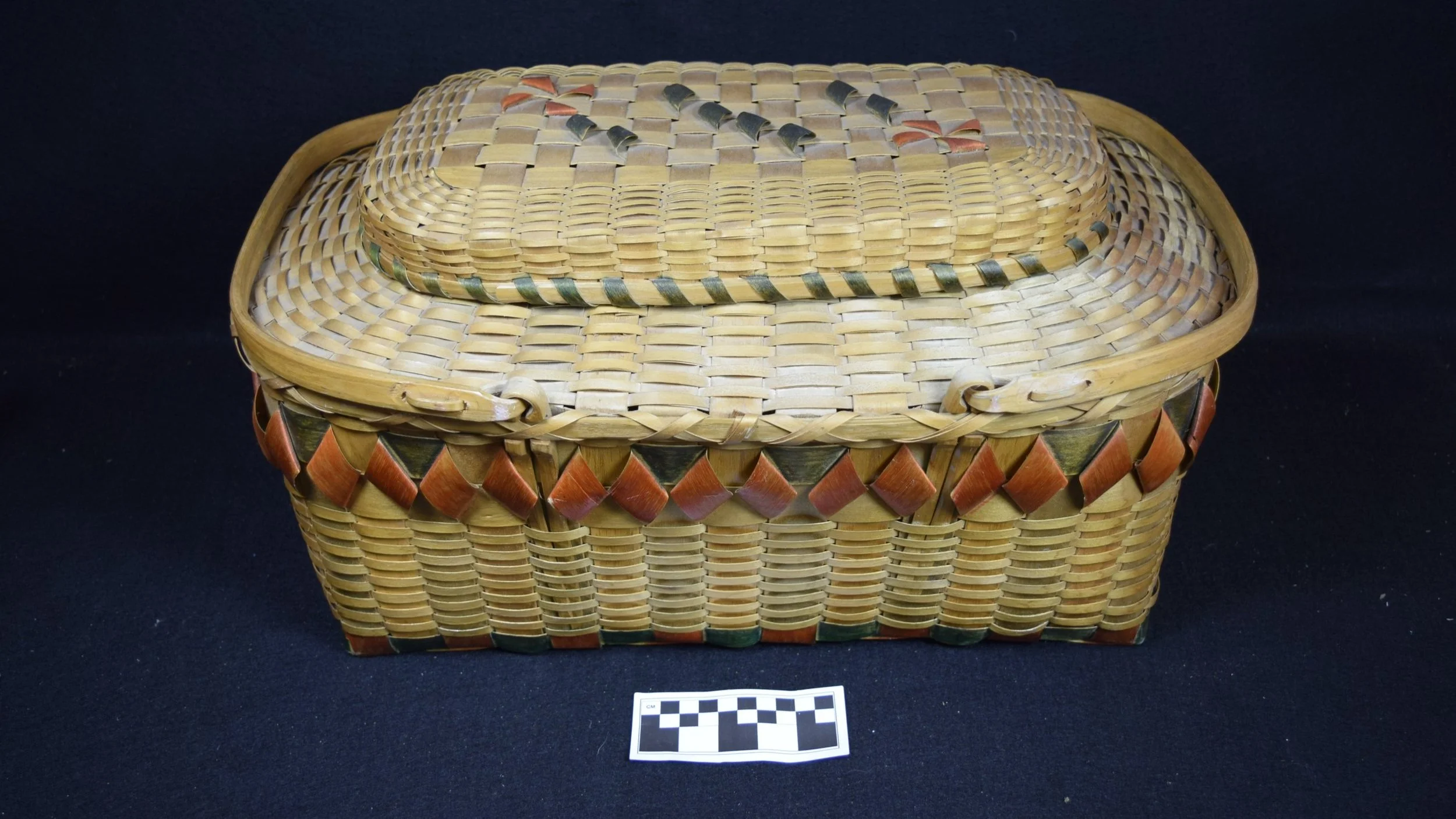Ho-Chunk Baskets
Basket making has been fundamental to Indigenous Peoples’ culture since ancient tribes began the practice thousands of years ago. Baskets were created for many purposes depending on the needs of the tribe, with styles ranging from simple and functional to highly decorated. More functional uses include gathering, processing, and cooking food, and for general storage. Some baskets were even waterproofed and used to haul water. Highly decorated baskets may have been used for ceremonial purposes or used in trade. Since ancient basket making, Indigenous Peoples have incorporated the natural resources of their different regions into their craft, often finding whatever material was easily bendable and could be woven or shaped. Southeastern tribes would often weave pine needles, tribes of the Southwest favored the yucca plant, while tribes of the Northwest preferred cedar.
Last year, a collection of eight gorgeous Ho-Chunk baskets were donated to the Historical Society. The Ho-Chunk baskets in our collection are made from strips of black ash wood, woven together in intricate designs. Black Ash is a type of tree more common in northern climates, such as the Midwest. Through a process called “pounding”, tribal members loosen the layers of wood within a log, prior to it being stripped. Thin wood strips were then cut and sometimes painted vibrant colors. Then, basketmakers would expertly weave the wood strips together into a variety of shapes and sizes.



